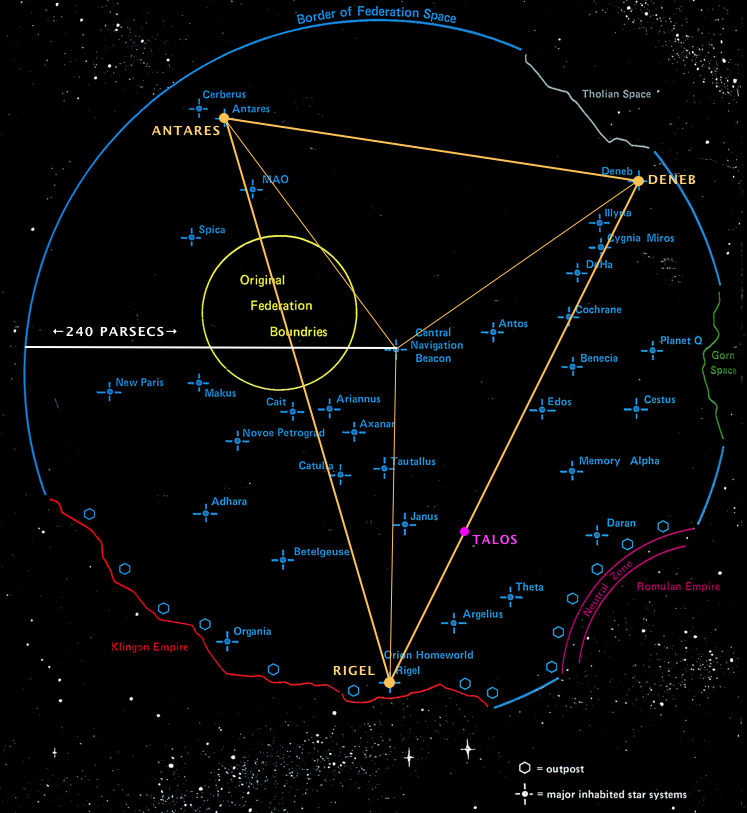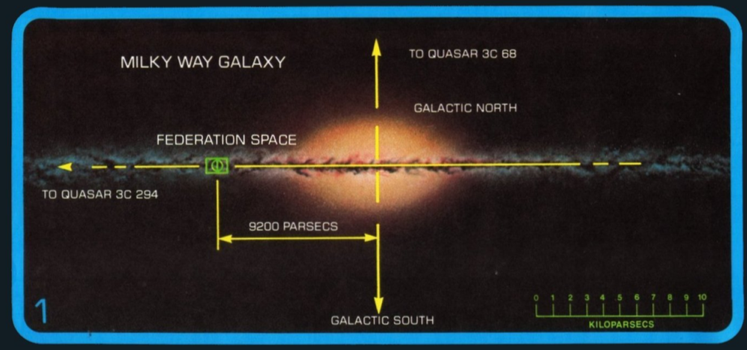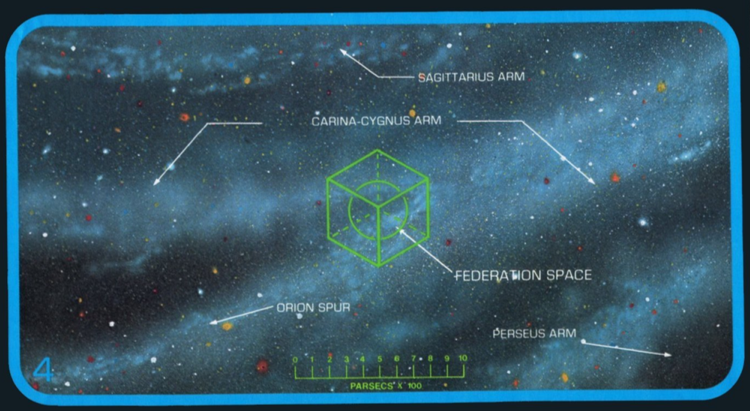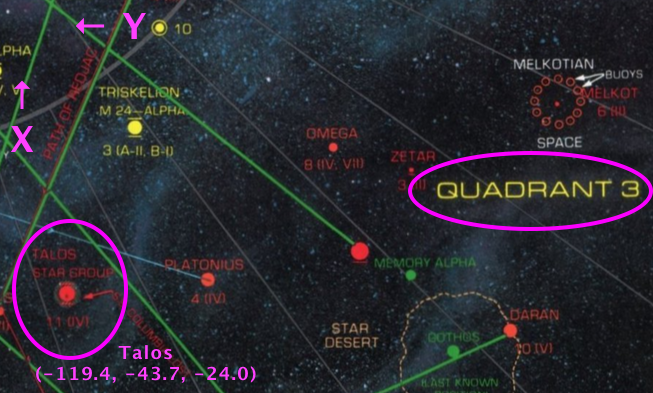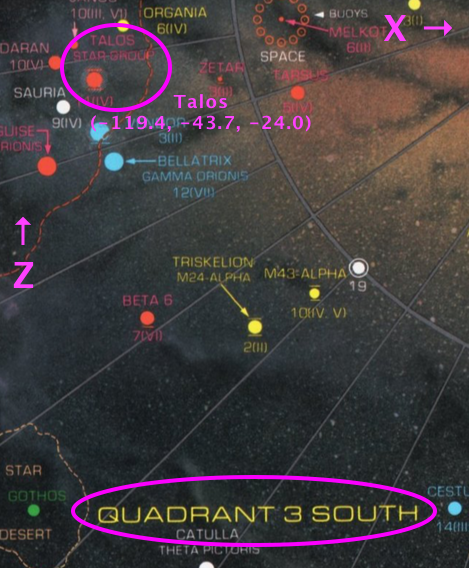Specifically discussed was Pike's claim that the Enterprise was from place that was "on the other end of this Galaxy." If that were literal, the Enterprise would be much farther from home and much more of the Galaxy explored than what later canon claims.
Oh, early Trek assumed that the Federation was spread out far more widely across the galaxy than later Trek did. Here's a magazine reproduction of the TNG art staff's map from about 1989. In that version, most of the Federation and the entire Klingon Empire are in the Perseus Arm, and the UFP is maybe 100 times bigger than it's now assumed to be. And even that's conservative compared to TOS's assumptions.
The reason for the change is that DS9 started out saying the station was on the edge of the Federation, but then started doing stories where it took only days to travel to Earth, or for neighboring powers like the Klingons and Cardassians to travel to each other's territories. So that forced the mapmakers to assume the UFP was much smaller than it had once been assumed to be.

